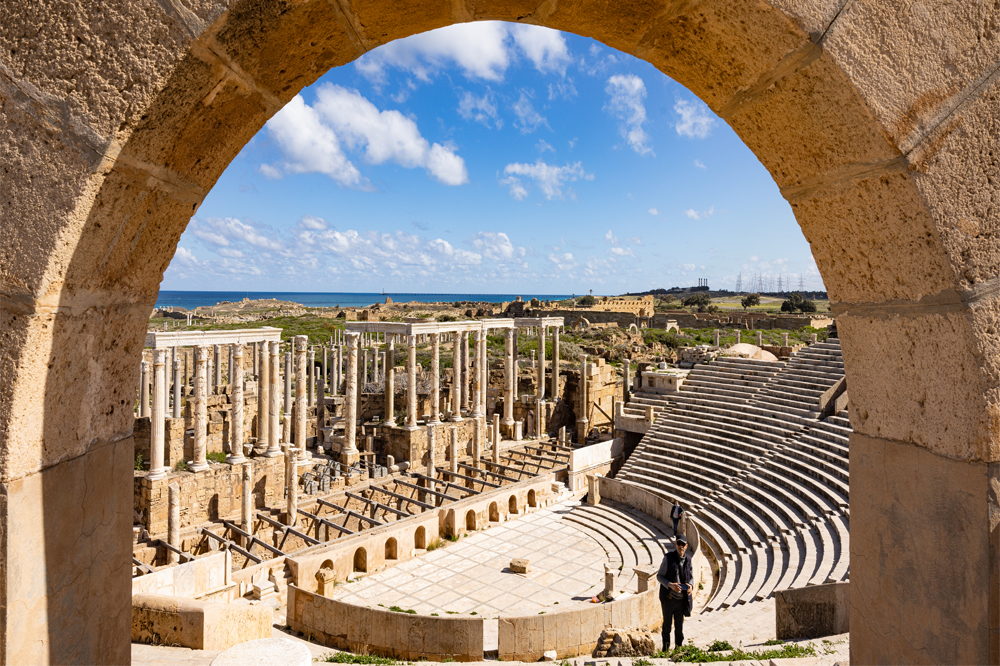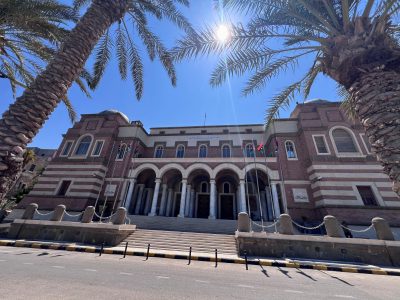Unlocking Libya Tourism Potential: A Path to Recovery
Tourism remains an underdeveloped sector in Libya, but with significant untapped potential to diversify growth. Globally, the sector accounts for roughly 10% of GDP and supports hundreds of millions of jobs. In post-conflict economies, tourism often plays an outsized role: for example, by the late 2010s tourism directly accounted for about 8% of Vietnam’s GDP and became the country’s leading services export. In the Western Balkans, tourism is even more critical – in Croatia and Albania (both of which emerged from conflict and transition in the 1990s), travel and tourism contribute on the order of 20–25% of GDP and one-fifth of employment. These examples show the multiplier effect of tourism in driving spending, tax revenue and widespread job creation. For Libya, developing even a fraction of this potential could add billions to output and employ tens of thousands of workers.
Libya has many fundamental assets – 1,700 km of Mediterranean coastline, five UNESCO World Heritage sites (including Leptis Magna and Cyrene), a rich cultural history, and unique desert landscapes – but years of conflict left the industry dormant. Before 2011, tourism was growing only slowly: about 180,000 foreign tourists visited in 2007, and receipts amounted to less than 1% of GDP. As of 2025, visitor numbers have only recovered to roughly 100,000 per year. This low base implies room for rapid growth if conditions improve. By comparison, international tourism receipts in 2010 were just 0.23% of Libya’s GDP – far below the world average of about 6%. Even modest growth would translate into a visible impact on GDP and job creation. For example, if Libya could reach 5–10% of GDP from tourism over a decade (in line with Balkan peers), the sector could contribute billions of dinars to the economy and absorb a large share of youth and women entering the labor market.
However, a range of barriers must be addressed. Libya’s tourist infrastructure is minimal: the U.S. State Department notes that “no formal tourism industry infrastructure is in place on any level. Accommodation, transport and tourist services have not kept pace with demand. Restoring and expanding hotels, roads and services will require major investment. Perception and security remain concerns: many potential visitors (and investors) still associate Libya with instability, which suppresses demand. Likewise, the general business climate is challenging. Libya ranks 185th of 190 in the World Bank’s 2019 Ease of Doing Business index, reflecting cumbersome regulations and a dominant public sector. These factors deter foreign tourism investors and limit financing. Skills shortages in hospitality and tourism services are also notable; trained tour guides, hotel staff and managers are in short supply after years of war. Addressing these constraints – upgrading infrastructure, easing travel, ensuring safety, improving the investment framework and building human capital – is essential for tourism to take off.
Libya’s Tourism Landscape and Recent Efforts
Libyan stakeholders have begun taking concrete steps to revive tourism. In 2024 the government launched an electronic visa system to simplify entry for international visitors. In parallel, Libya extended visa-free entry to nationals of eight countries, boosting regional travel. Such reforms can quickly expand demand: e-visas reduce delays and costs, while visa-free access encourages neighboring markets to visit. Cultural heritage sites are also receiving new attention. Restoration projects are underway in historic districts: for example, Tripoli’s Old City (“Al-Madina”) has seen coordinated rehabilitation of its mosques, markets and houses, turning it into a living museum that draws domestic and foreign visitors. In the oasis town of Ghadamès – a UNESCO site long on the “Danger” list – authorities have worked with international partners to rehabilitate buildings. In 2024, Libya reported that the historic Alaally building in Ghadamès was fully restored as a visitor center under the MaLiCH heritage program. These projects both preserve unique sites and send a signal that Libya is reopening to tourism.
New forms of tourism are also emerging domestically. Motorsports rallies in the Sahara (such as the Ghadamès Desert Rally and T-T Desert Rally) are attracting regional competitors and spectators, injecting income into local economies and boosting Libyan interest in travel at home. Media coverage and travel bloggers are gradually shifting Libya’s image. International influencers have highlighted Libya’s archaeological ruins and Mediterranean coast, “reinforcing the narrative” of Libya as an adventurous travel destination. As the UNDP notes, these stories “are shifting perceptions, highlighting Libya not as a forgotten or fragile place but as a land of untapped adventure”. This changing narrative is valuable, but it will take sustained marketing to overcome Libya’s entrenched image abroad.

Despite these gains, challenges remain. Power outages, erratic transportation and limited policing still make many areas difficult for visitors. Coordination among agencies (tourism, transportation, heritage, security) is weak, and legal frameworks (e.g. on investment or public-private partnerships) need updating. In UNDP consultations, Libyan stakeholders emphasized gaps in airports and road networks, outdated regulations, and lingering security concerns as top impediments. Overcoming these will require clear policy direction and international support.
Policy Roadmap for Sustainable Growth
To translate its tourism potential into tangible results, Libya needs a focused, sequenced strategy that addresses investment, workforce development, and domestic and international promotion. A clear legal framework for tourism projects – covering hotels, transport, and attractions – would help attract private developers and foreign investors, particularly through public-private partnership (PPP) laws and incentives for building in underdeveloped areas. Simplifying bureaucratic hurdles, such as licensing and land transfers, would further unlock capital, as shown by World Bank research. Partnering with international organizations, as demonstrated by the MaLiCH project, could bolster confidence and technical support for restoration and larger-scale ventures. In parallel, investing in hospitality and language training through short courses and vocational programs, possibly in collaboration with countries with advanced tourism sectors like Switzerland or the UAE, would ensure Libya can deliver a high-quality visitor experience while creating jobs and encouraging entrepreneurship.
Domestic tourism also presents a valuable opportunity to build demand and national unity. Subsidized “staycation” packages, cultural festivals, and initiatives that make internal travel easier could encourage Libyan families to explore heritage sites and resorts, while promoting regional tourism to neighboring areas such as the Egyptian Sinai and Tunisia. Internationally, Libya should work to rebrand itself by showcasing its history, culture, and progress toward stability through joint marketing campaigns, tourism fairs, and partnerships with airlines and regional operators. Collaborative projects like Maghreb heritage trails could further expand reach. At the same time, sustainable development must remain a priority: regulations to protect cultural sites and fragile environments, combined with reinvesting tourism revenues into infrastructure and training, would ensure long-term benefits. By focusing on community involvement and equitable growth, Libya can avoid common pitfalls and, like Vietnam, use tourism income to uplift rural and disadvantaged regions while preserving its heritage.
Tourism offers Libya a realistic path to grow its economy and rebuild after conflict. Even moderate gains could generate employment, diversify incomes and stimulate related industries (transport, crafts, agriculture). With sustained effort – improving ease of travel, inviting investment, training workers and promoting its attractions – Libya could see noticeable benefits within a few years. Over the medium term, a mature tourism sector might contribute several percent of GDP, support tens of thousands of jobs, and strengthen regional ties. By systematically addressing constraints and capitalizing on its historic and natural appeal, Libya can harness tourism as a powerful engine for economic resilience and shared prosperity.




